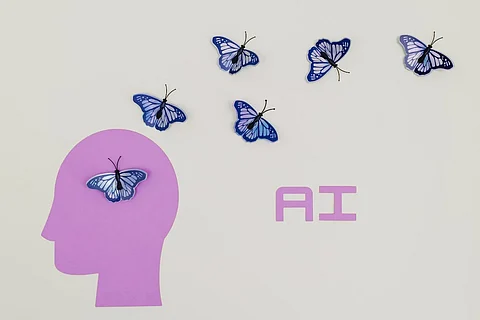

Without a doubt, artificial intelligence (AI) is the most disruptive technology of our age. It has entered a variety of industries and majorly impacted and even completely redefined many sectors, including photography and, in particular, photo editing.
Thanks to intuitive AI, manual tasks that once took hours to complete can now be automated and done in a couple of minutes, streamlining a wide range of mundane, repetitive tasks and allowing professionals to focus on the more creative side of their work.
At the same time, AI photo editing has allowed virtually anyone to become an artist – gone are the days when only skilled professionals using advanced software could craft creative visuals.
And this is only the beginning. What can we expect in the field in the next few years?
AI complements traditional photo editing software by automating tedious, uninspiring, and time-consuming tasks. On top of that, it learns from data (the more you use it, the smarter it gets) to help users achieve their goals more quickly and easily. For creatives, this means more free time to focus on the more experimental, creative parts of photo editing.
For instance, to edit a portrait, you might typically spend a couple of hours changing the background, adjusting the exposure and color, correcting imperfections, and making the image more appealing in general. But with AI editing software, you can cut that time in half, increasing your efficiency and productivity.
Today, there are countless AI-powered photo editing tools available. While each tool has its own specific features that make it slightly different from one another, the goal of every smart photo editor is the same: reduce photo editing workloads.
The best AI image generator allows users to quickly and easily do various editing tasks, like change backgrounds, remove pesky objects, detect faces, adjust colors, add textures, upscale images, etc.
In theory, at least, these tools should help users save time, energy, and money. As a bonus, they should also make creativity more accessible to more people.
Ethical and legal implications of using AI-powered tools in creative fields aside, it is obvious that AI is already altering the craft of photo editing. But what does the future hold?
The future of AI is constantly in flux, but when it comes to photo editing, it is certain that AI will make photo editing tools even smarter and more efficient.
AI promises to push boundaries in creativity and create more opportunities for commercial success by reducing time spent on repetitive tasks. It also promises – and indeed, already does – to lower the barrier to entry into the world of photo editing and empower young artists to visualize their imagination.
One way that AI will make photographers' work easier is through a culling process. Normally, to find the best photo, photographers have to look through hundreds of images, sort the good from the bad, great from the mediocre, and then do another round of culling to pick the absolute best one(s).
The more photos one has to sort through, the more exhausting this process becomes. But this is where AI can help. By letting the tool look through the photos, the user can focus on what really matters: experimental and creative work.
Smart technology will also be able to take low-quality images and upscale them into high-resolution files. Granted, various image editing tools can already do this to an extent, but when paired with AI, the end result will be of much higher quality, even when done by non-professionals.
Using an AI image editing tool, users will be able to easily edit backgrounds easily, replace skies, auto mask, color correct, and generally spruce up their photos in a few clicks.
While AI-powered software can greatly reduce editing workload, it does not bring creativity to the proverbial table, nor is it likely to do so in the future. The reason is simple: AI does not experience inspiration and cannot figure out new ways to edit images. So if the user relies too much on it, they risk losing their individuality and stunting their creativity.
And while it's a good thing that AI-powered image editing tools can empower almost anyone to become an artist, the flip side of this is that many professional photographers and editors will lose their jobs.
Additionally, like AI-generated text, AI-generated or edited images tend to look similar. After all, AI can imitate, automate and streamline, but it cannot and probably will never be able to replace human creativity and judgment.
Artificial intelligence is evolving at a startling pace, and there is no stopping it. Whether the changes AI has brought and will continue to bring to the photography and photo editing industry are positive or negative is up to individual interpretation. What is certain, though, is that we must either evolve with the changes or get left behind.
Join our WhatsApp Channel to get the latest news, exclusives and videos on WhatsApp
_____________
Disclaimer: Analytics Insight does not provide financial advice or guidance on cryptocurrencies and stocks. Also note that the cryptocurrencies mentioned/listed on the website could potentially be scams, i.e. designed to induce you to invest financial resources that may be lost forever and not be recoverable once investments are made. This article is provided for informational purposes and does not constitute investment advice. You are responsible for conducting your own research (DYOR) before making any investments. Read more about the financial risks involved here.
